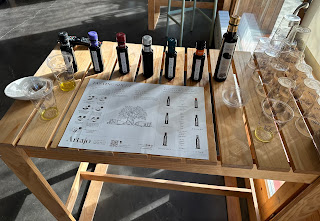Thursday 29 February 2024
“Dancing across the valley” - Lord Norman Fosters’ words to describe the beautiful Millau bridge he designed, which connects two plateaus in central France.
It may be ‘just’ a motorway bridge on the A75 but its beauty and elegance sets it apart from so many others. The seven pillars are huge and they taper and split at the top, like massive tuning forks.
To make the most of our time here we firstly drove under the bridge along the River Tarn and its valley, with the viaduct towering 343 meters above us. Then onto the nearby town of Millau which, thanks to the traffic now using the bridge, no longer grinds to a halt during July and August when most of Paris’s population heads south to the coast (which is where we are now!).
From Millau we then headed up to the viewpoint and excellent visitor centre on the northern plateau. With videos and drone footage there is a step by step explanation of the design vision, the decades of planning and the 3 years of construction at a cost of £220 million.
When submitting his design Norman Foster said he was "definitely NOT the person that they should choose if they wanted to build a bridge across the river. I wanted to build a bridge to cross the whole valley, the entire space between the two high plateaux on either side, something that would be elegant and uniform and delicate and take account of the grandeur and sweep of the landscape."
The final words of this blog post should go to the bridges French engineer, Michel Virlogeux, who said “Transparence, Simplicité, Elegance”.






















































